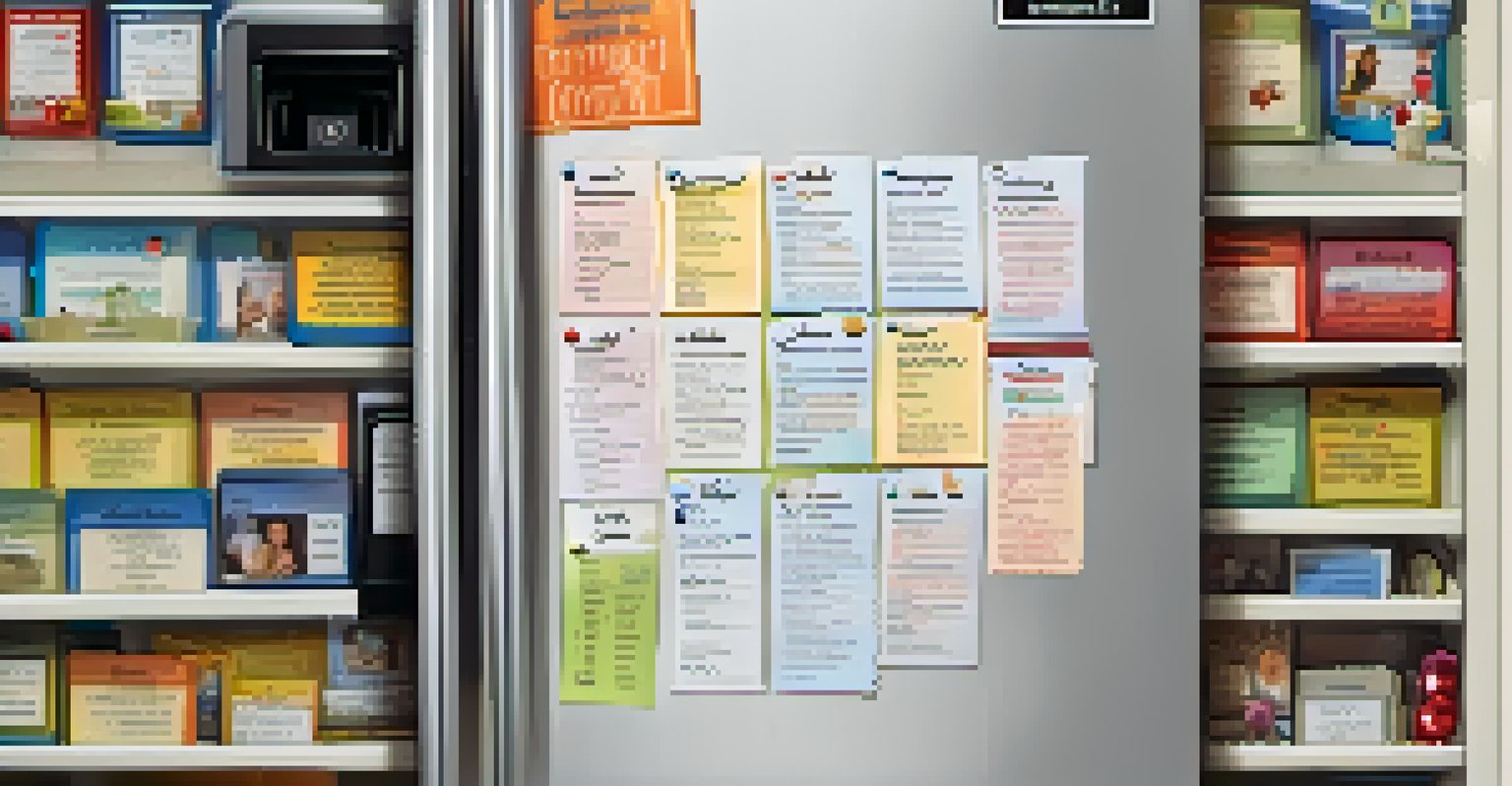Creating a Personal Safety Plan for Caregivers

Understanding the Importance of a Personal Safety Plan
A Personal Safety Plan is essential for caregivers, as it helps ensure their well-being while providing care. Caregiving can sometimes lead to high-stress situations, making it crucial to have a strategy in place. By recognizing potential risks and preparing accordingly, caregivers can create a safer environment for themselves and those they care for.
Safety isn't just a slogan, it's a way of life.
Think of a Personal Safety Plan as a roadmap for navigating the challenges that may arise. Just like a travel plan lays out your route and stops, this plan helps caregivers identify potential hazards and develop responses. It’s a proactive approach that empowers caregivers to take control of their safety.
Ultimately, a well-thought-out safety plan not only protects the caregiver but also enhances the quality of care provided. When caregivers feel secure, they can focus more on their responsibilities and less on their worries. This leads to better outcomes for everyone involved.
Identifying Potential Risks and Hazards
The first step in creating a Personal Safety Plan involves identifying potential risks and hazards associated with caregiving. This can include physical risks, like lifting heavy objects, or emotional stressors, such as dealing with difficult behaviors from those in your care. By being aware of these risks, caregivers can prepare themselves to handle them effectively.

Consider conducting a thorough assessment of the caregiving environment. Look for hazards such as cluttered spaces, inadequate lighting, or unsafe equipment. Documenting these risks helps prioritize which areas need immediate attention, making it easier to address them systematically.
Importance of a Personal Safety Plan
A Personal Safety Plan is crucial for caregivers to ensure their well-being and enhance the quality of care.
Additionally, it can be helpful to talk to other caregivers or healthcare professionals about their experiences. Sharing insights can reveal common risks that you may not have considered, further enhancing your understanding and preparedness.
Creating Emergency Contact Lists
An essential component of a Personal Safety Plan is having an emergency contact list readily available. This list should include family members, friends, healthcare providers, and emergency services. Having this information at your fingertips can save precious time during a crisis.
In the midst of chaos, there is also opportunity.
When compiling your list, ensure that it includes multiple forms of contact for each person, like phone numbers, email addresses, and even social media profiles if necessary. Additionally, consider noting which contacts are best suited for specific types of emergencies, such as medical crises or emotional support.
Don't forget to share this list with anyone who may be involved in your caregiving duties. This ensures that everyone is on the same page and can act quickly if needed. Regularly review and update your contact list to keep it current and effective.
Developing Strategies for Personal Safety
Once risks and emergency contacts are identified, it's time to develop strategies for personal safety. This could involve learning self-defense techniques, setting boundaries with those you care for, or establishing a support network. These strategies empower caregivers to handle challenging situations more confidently.
For example, if you anticipate encountering aggression, practicing de-escalation techniques can be invaluable. Similarly, setting clear boundaries with your care recipient can help manage expectations and prevent misunderstandings. These proactive steps can significantly reduce the likelihood of dangerous situations arising.
Identifying Risks is Key
Recognizing potential risks and hazards helps caregivers prepare effectively for challenges they may face.
Moreover, self-care should be a core part of your strategies. By prioritizing your physical and mental health, you can better equip yourself to face challenges. Regular breaks, exercise, and relaxation practices can all contribute to a more resilient caregiver.
Establishing a Routine for Safety Checks
Incorporating regular safety checks into your routine is a great way to maintain a safe caregiving environment. This could mean assessing the physical space for hazards, reviewing your emergency contact list, or practicing emergency procedures. Consistency helps ensure that safety remains a priority.
Consider scheduling these checks at specific intervals, like weekly or monthly, to keep them manageable. Use this time to reflect on any new risks that may have arisen or changes in your caregiving situation that might affect safety. This proactive approach keeps your safety plan dynamic and relevant.
In addition, encourage open communication with those you care for about safety. Discussing safety measures can foster a sense of shared responsibility and awareness. This not only helps you stay safe but also promotes a collaborative caregiving environment.
Educating Yourself and Others
Education plays a crucial role in enhancing safety for caregivers. This can include attending workshops, reading relevant literature, or participating in online courses related to caregiving safety. The more knowledge you acquire, the better you can navigate potential risks.
Consider sharing this knowledge with others in your caregiving network. Organizing group training sessions or discussions can create a supportive environment where everyone learns together. This collective effort can lead to a more informed and prepared caregiving community.
Regularly Review Your Safety Plan
Consistent reviews and updates of your safety plan ensure it remains relevant and effective as circumstances change.
Furthermore, staying updated with the latest safety protocols and resources is vital. Regularly check for new guidelines from healthcare organizations or caregiver support groups to ensure your safety plan remains effective and comprehensive.
Reviewing and Updating Your Safety Plan Regularly
A Personal Safety Plan is not a one-time project; it requires regular reviews and updates to remain effective. As circumstances change—whether due to health changes in the care recipient, new caregiving responsibilities, or shifts in your personal life—your safety plan should evolve accordingly. This ensures that it remains relevant and practical.
Set a specific timeline for reviewing your plan, such as every six months or after significant life events. During these reviews, assess what has worked well and what areas may need improvement. It's an opportunity to refine your strategies and incorporate new insights gained from experiences.

In addition, encourage feedback from those involved in your caregiving journey. Their perspectives can provide valuable insights that you may not have considered. This collaborative approach to refining your safety plan enhances its effectiveness and fosters a sense of community.